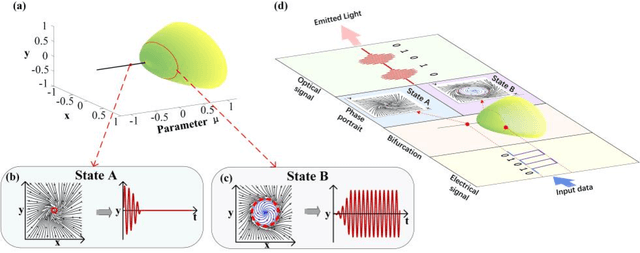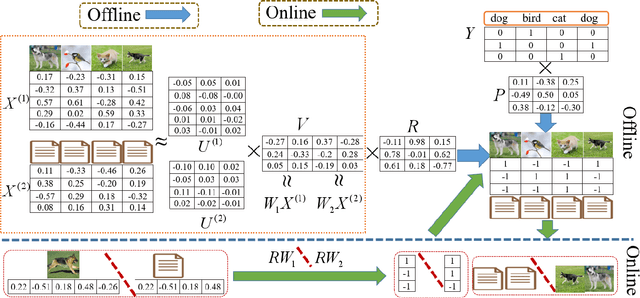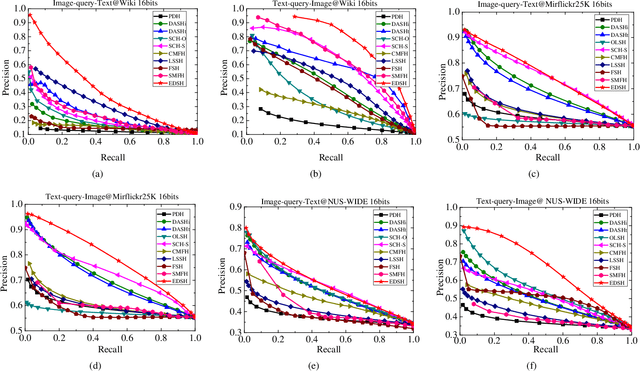Lianshan Yan
Millimeter-level Resolution Photonic Multiband Radar Using a Single MZM and Sub-GHz-Bandwidth Electronics
Oct 18, 2022

Abstract:We here propose a novel cost-effective millimeter-level resolution photonic multiband radar system using a single MZM driven by a 1-GHz-bandwidth LFM signal. It experimentally shows an ~8.5-mm range resolution through coherence-processing-free multiband data fusion.
Cost-effective photonic super-resolution millimeter-wave joint radar-communication system using self-coherent detection
Oct 09, 2022



Abstract:A cost-effective millimeter-wave (MMW) joint radar-communication (JRC) system with super resolution is proposed and experimentally demonstrated, using optical heterodyne up-conversion and self-coherent detection down-conversion techniques. The point lies in the designed coherent dual-band constant envelope linear frequency modulation-orthogonal frequency division multiplexing (LFM-OFDM) signal with opposite phase modulation indexes for the JRC system. Then the self-coherent detection, as a simple and low-cost means, is accordingly facilitated for both de-chirping of MMW radar and frequency down-conversion reception of MMW communication, which circumvents the costly high-speed mixers along with MMW local oscillators and more significantly achieves the real-time decomposition of radar and communication information. Furthermore, a super resolution radar range profile is realized through the coherent fusion processing of dual-band JRC signal. In experiments, a dual-band LFM-OFDM JRC signal centered at 54-GHz and 61-GHz is generated. The dual bands are featured with an identical instantaneous bandwidth of 2 GHz and carry an OFDM signal of 1 GBaud, which help to achieve a 6-Gbit/s data rate for communication and a 1.76-cm range resolution for radar.
Reciprocal phase transition-enabled electro-optic modulation
Mar 28, 2022



Abstract:Electro-optic (EO) modulation is a well-known and essential topic in the field of communications and sensing. Its ultrahigh efficiency is unprecedentedly desired in the current green and data era. However, dramatically increasing the modulation efficiency is difficult due to the monotonic mapping relationship between the electrical signal and modulated optical signal. Here, a new mechanism termed phase-transition EO modulation is revealed from the reciprocal transition between two distinct phase planes arising from the bifurcation. Remarkably, a monolithically integrated mode-locked laser (MLL) is implemented as a prototype. A 24.8-GHz radio-frequency signal is generated and modulated, achieving a modulation energy efficiency of 3.06 fJ/bit improved by about four orders of magnitude and a contrast ratio exceeding 50 dB. Thus, MLL-based phase-transition EO modulation is characterised by ultrahigh modulation efficiency and ultrahigh contrast ratio, as experimentally proved in radio-over-fibre and underwater acoustic-sensing systems. This phase-transition EO modulation opens a new avenue for green communication and ubiquitous connections.
Efficient Discrete Supervised Hashing for Large-scale Cross-modal Retrieval
May 03, 2019



Abstract:Supervised cross-modal hashing has gained increasing research interest on large-scale retrieval task owning to its satisfactory performance and efficiency. However, it still has some challenging issues to be further studied: 1) most of them fail to well preserve the semantic correlations in hash codes because of the large heterogenous gap; 2) most of them relax the discrete constraint on hash codes, leading to large quantization error and consequent low performance; 3) most of them suffer from relatively high memory cost and computational complexity during training procedure, which makes them unscalable. In this paper, to address above issues, we propose a supervised cross-modal hashing method based on matrix factorization dubbed Efficient Discrete Supervised Hashing (EDSH). Specifically, collective matrix factorization on heterogenous features and semantic embedding with class labels are seamlessly integrated to learn hash codes. Therefore, the feature based similarities and semantic correlations can be both preserved in hash codes, which makes the learned hash codes more discriminative. Then an efficient discrete optimal algorithm is proposed to handle the scalable issue. Instead of learning hash codes bit-by-bit, hash codes matrix can be obtained directly which is more efficient. Extensive experimental results on three public real-world datasets demonstrate that EDSH produces a superior performance in both accuracy and scalability over some existing cross-modal hashing methods.
 Add to Chrome
Add to Chrome Add to Firefox
Add to Firefox Add to Edge
Add to Edge